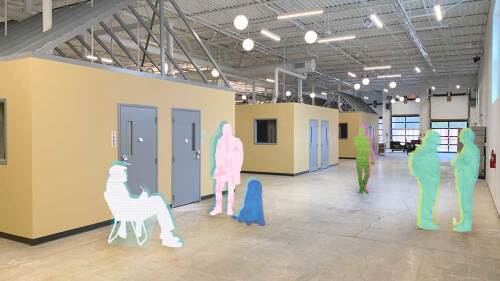Houses for a New World: Builders and Buyers in American Suburbs, 1945–1965
Barbara Miller Lane
Princeton University Press
41 William Street, Princeton, NJ 08540; http://press.princeton.edu.
2015. 243 pages. Hardcover, $49.95.
This book by Barbara Miller Lane, an emeritus professor of history at Bryn Mawr College in Pennsylvania, describes a unique era in American homebuilding that gave both working-class and more upwardly mobile middle-class Americans a shot at what many consider the American dream—a house and a yard in the suburbs.
To tell her story, the author zeroes in on 12 communities that range in size from a few hundred homes to more than 2,500 in four U.S. metropolitan areas: Los Angeles, Philadelphia, Boston, and Chicago.
Much of Lane’s research focuses on the careers of the homebuilders who created these communities, but she also provides some description of the houses along with floor plans and photographs.
For general readers, the most interesting aspect of her work is likely to be her interviews with the adult children of the original owners and, in a few cases, the original buyers themselves because their recollections give a more immediate sense of what life was like in these pioneering suburbs.
For example, in the early years there were no fences in the front- or backyards, so the kids played continuously up and down the streets and in the huge shared backyard area in the center of every block. The kids recalled that they were constantly in each other’s houses and the parents frequently socialized, especially in the summers on their rear patios.
By current standards, the houses were small (the earliest ones were about 1,000 square feet [93 sq m]), the closets were tiny, and the eating area in the kitchens was modest. But none of these original occupants mention size at all—they simply adapted the three-bedroom, one-bathroom houses to suit their individual circumstances. For example, one family with five kids put three of them in the largest bedroom (which the builder had intended for the parents) and two in the smallest bedroom. The parents shared the medium-sized one.
Lane does not tell us how these communities have fared since 1965, the end point of her research. But she does emphasize that the majority of the early buyers were working-class families who put down roots and spent the rest of their lives there. Judging by her interviews, their connection to place has been passed on to subsequent generations: many of the children of the original owners now own the houses where they grew up or bought one down the block. In some cases, the grandchildren of the original owners now live these communities.
What were the special circumstances that led the builders to create the communities that Lane studied, and how do these differ from what homebuilders and developers face today? She cites two unique factors.
First, returning veterans could get cheap government-financed mortgages, so builders could draw from a huge pool of “prequalified” buyers. Second, vast tracts of land in outlying areas were available at low cost, so builders could profitably market their houses to working-class buyers—the majority of buyers in the communities that Lane examined. In the years after 1965, the cost of land greatly increased, pricing most working-class buyers out of the new-home market.
The architecture profession has long criticized mass-produced housing in the suburbs for lacking artistic design and sophistication. Lane’s book puts this argument in perspective, explaining the constraints that faced these pioneering land developers, who often worked with designers. She also emphasizes that the buyers of the houses in the suburbs where she did her research were happy with their choices and loved their homes—the ultimate measure of success in any architecture project.
Readers seeking a historical overview of this unique era in American homebuilding should enjoy this book.
Katherine Salant is a nationally syndicated real estate columnist and author.





